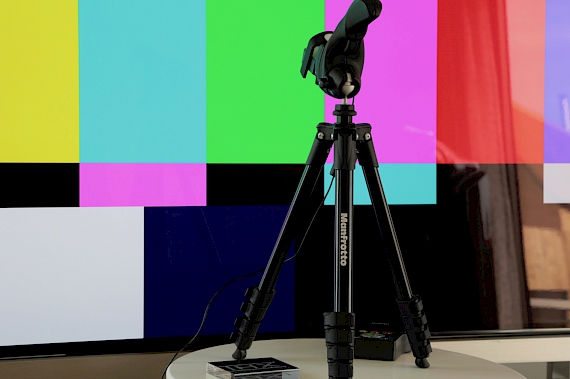
So, why do we calibrate a display? Surely manufacturers ship their televisions and projectors from the factory with the optimal settings necessary for critical viewing?
Well, the answer is unfortunately they don't. Out of the box factory settings can fall well short of what is required to accurately reproduce what the director intended when shooting the movie, or the palette that the colourist used in the production suite when mastering the film. Most televisions come out of a factory at a colour temperature setting from 8000 degrees (Kelvin) and beyond. This yields a very inaccurate picture, with a very strong push of blue present in the display. This is done by manufacturers to make their sets stand out from others in retail stores.
For the average consumer, a display that is bright and vivid can be very appealing. These days some professional models and manufacturers are starting to realise the importance of calibration, but there still is a persistence among manufacturers for shipping their displays with an incorrect colour balance, which means corrections are needed to be made to achieve an accurate image. Factors such as room lighting, source equipment, viewing angles and enviroment all impact on what you see when viewing a movie or TV show. Images can appear washed-out, lacking in contrast, lacking in detail and over-sharp and artificial looking.
Calibration allows us to take a degree of control over these factors and adjust the display to bring out the missing shadow detail, make colours look lifelike and natural and maximise contrast. We calibrate to specific, defined standards, not our perception of what those colours should look like. The specific shade of blue that James Cameron intended should be the same shade of blue you see what watching Avatar, Christopher Nolan's recently released Batman Triolgy in High Dynamic Range is the result of many months of remastering. Why would you not want to replicate the source as accuratley as possible to see what Nolan saw?
In addition to optimizing the display with correct color reproduction from equipment and taking into account room lighting conditions (professional calibrators will do both Day and Night settings), proper calibration will give you full detail with no artifacts in both the bright and dark areas of the picture. The result should be a more three-dimensional "immersive" viewing experience, with less eye fatigue as well as an extended lifespan for the display.
If you would like to know more about the benefits of getting your TV or projector calibrated, please give us a call. We love to talk calibration!